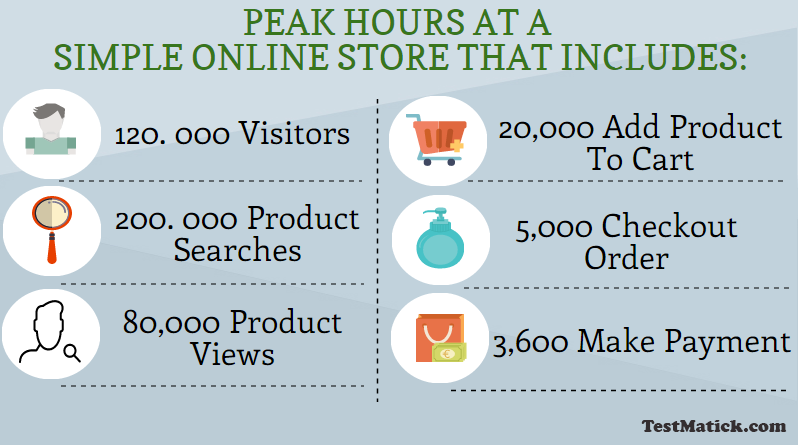Load testing companies count many types of load testing services, as the most of them are variations on a theme. Load Testing is a kind of performance testing that is executed to validate if the application will stand a load. It determines bottlenecks in the software and involves simulating real load for the target application. Proper load testing requires deep knowledge of the users’ psychology. Load testing service is conducted at the late phases of the development process when a system is ready to release.
Key Attributes of Load Testing:
[checklist type=”eg. checked, dotted, arrowed” margin_bottom=”no”]
- Ramp-up rate.
- Percentage of the peak loads.
- Type of the peak loads.
- Duration of the peak loads.[/checklist]
Example of Requirement:
Some online stores practice special campaigns with offers or discounts that start in an exact time. In this case, if the store is popular among users, it may align the peak hour. The majority of users use gadgets like smartphones or tablets to access the store. A simple Online Store may expect a peak hour to include the following:

Test Execution
It’s essential to perform a set of testing types before proceeding to the full test execution. It’s done for ensuring the service or product behavior and identifying some problems that could further occur at a low transaction rate. It is a good chance to validate if all the servers proceed to the expected proportions of workload.
Test Report & Analysis
The final test report should include all the test phases for the entire period of the test. It’s done for viewing the impact of changing numbers of users. It should also include the key response time statistics for the peak hour.
Complications Excluded from Load Testing:
Load testing is quite straightforward. It excludes the process of registration, logins and failed logins, password resets, etc. It also excludes the consideration of expected short-term peak hours in user activity.
Considerations of Other Systems:
When considering other systems, we don’t account on ERP, Warehouse, downstream order processing, Dispatch, and customer support systems. We consider only the customer interaction component.
Comments are closed.









